The awe-inspiring Himalayas sprawl 2,560 km across north India. Therefore a visitor has to experience them piece at a time, drawing up and following a carefully planned itinerary
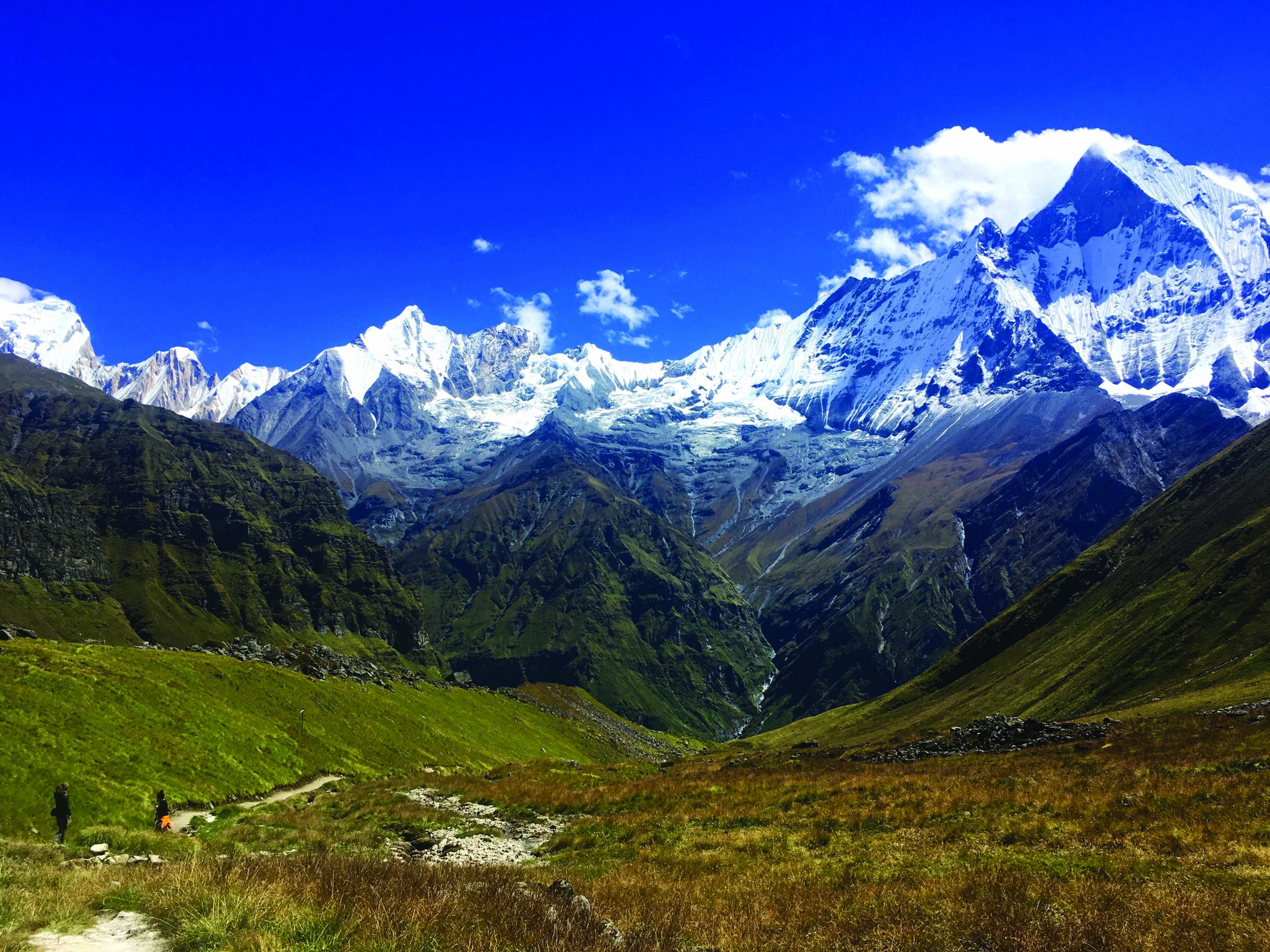
The mighty Himalayan range of mountains evoke a wide array of emotions in people. For the
adventurer it’s a vast playground; for a naturalist it’s a paradise of flora and fauna, for pilgrims its
mystical, remote temples and shrines are points of salvation. The rugged peaks, evergreen forests, rushing rivers and rapids offer something of value to everyone.
For backpackers and trekkers, camping on their scenic slopes and in ravines of the snow-capped ranges, is akin to attaining nirvana. But the Himalayas sprawl 2,560 km across north India. Therefore the visitor has to experience them piece at a time, drawing up and following a carefully planned itinerary.
For the purpose of this travelogue, your correspondent together with a five-strong band of adventurers, chalked out a plan to holiday in the foothills and travel along the well-beaten pilgrim trails of Jammu and Uttarakhand. The itinerary included a flight from Bangalore to Delhi, train
journeys to Jammu, Amritsar, Haridwar and Rishikesh before catching the Delhi-Bangalore return flight seven days later.
The journey began on March 4, at Bangalore airport which is in the throes of a major facelift. Unexpectedly, the flight was undelayed and we landed in Delhi at 9.30 a.m. An overnight train journey deposited us in Jammu, a city of temples, at 7.45 a.m the next morning.
Now a Union territory governed directly by New Delhi, Jammu has an interesting history. According to legend, Raja Jamboo Lochan who reigned in the 14th century witnessed a tiger and a lamb drinking peacefully from the same pond at the same time. This extraordinary phenomenon prompted the raja to build a city on the site, for the strong and weak to live together in peace and mutual tolerance. Initially, the city was known as ‘Jamboo’, after his own name. With the passage
of time and due to frequent mispronunciation, the city (pop. 502,000) acquired its current nomenclature.
Sited in the sub-mountainous foothills of the Himalayas with the Shivalik range rising to the north and the IndoGangetic plain in the south, Jammu enjoys a sub-tropical climate with hot, dry summers and cold winters.
In 1730, the region was subjugated by the Dogra prince, Raja Dhruv Deva of neighbouring Kashmir, who transformed it into the winter capital of the kingdom of Jammu & Kashmir. Over the next two centuries Jammu emerged as an important centre of art and culture, becoming widely known for its pahari school of painting. There are few natural attractions in the town — its myriad temples and shrines with their glittering shikharas soaring into the sky are its claim to fame.
The Raghunath Mandir comprising a cluster of shrines is the largest temple complex in contemporary Jammu & Kashmir, which since the partition of India in 1947, has been the bone of contention between India and Pakistan.
Therefore a tight security blanket surrounds the temple. Gigantic statues of deities and the numerous lingas enshrined in the inner sanctums present an enchanting sight. Another revered temple in the city is the Bawey Wali Mata inside the Bahu Fort, about 4 km from Raghunath Mandir. The majestic Bahu Fort — the oldest edifice in the region — surrounded by terraced gardens, waterfalls and flower beds is the place for exhilarating walks amid natural surroundings.
While in Jammu, take in Peer Mitha, a venerated Muslim shrine in this city of temples. Built in honour of Peer Mitha, a contemporary of poets Ajaib Dev and Ghareeb Nath — the shrine is revered for its power of prophecy and reported miracles.
Shopping. The narrow crowded lanes of Raghunath Bazaar (surrounding Raghunath Mandir) comprise the busiest shopping area in Jammu. On offer are attractive Kashmiri shawls and handicrafts, traditional Dogra jewellery and exotic dry fruits.
Accommodation. Top-end: Radisson Blu (Rs.6,000 per night), The Hideaway: Unwind Yourself (Rs.4,700), Country Inn and Suites by Radisson (Rs.3,098). Mid-range: Lords Inn Jammu (Rs.2,282), K C Residency (Rs.2,812), Asia One Earth (Rs.2,075). Budget: Hotel Satyam (Rs.1,662), OYO Hotel Maa Residency (Rs.1,634), Hotel City Heart (Rs.1,339).
KATRA
A 90-minute (50 km) bus ride from Jammu took us to Katra, base camp of pilgrims bound for the blessed Mata Vaishnodevi Shrine in the Trikuta hills. From Katra a 12.5 km trek takes visitors to the temple sited at a height of 5,200 feet above msl (mean sea level). En route to the temple,
several interesting landmarks and resting points for pilgrims offer spectacular vistas of the plains below.

Currently the shrine is governed and administered by a specially constituted board which has vastly upgraded the facilities available to pilgrims. It has provided resting points, cafeterias, clean and hygienic toilets along the arduous trek route which draws legions of pilgrims every year. Their
number has increased from 6.5 million in 2004 to 7.9 million in 2019.
Legend is that several millennia ago, Vaishnodevi, a devotee of Lord Vishnu had taken a vow of celibacy. Bhairon Nath, a tantric tried to stop her. Through his tantric powers, he visualised her going towards the Trikuta hills and gave chase. The goddess felt thirsty at Banganga and shot an
arrow into the earth, from where water gushed out. Charan Paduka, marked by the imprints of her feet, is one of the places of worship enroute to the summit. The Goddess then meditated in a cave at Adhkawari, halfway from Katra to the top of Trikuta hill. It took Bhairon Nath nine months to locate her, which is why the cave is also known as Garbh Joon. When he finally found her performing penance, a battle ensued in which Vaishnodevi assumed the form of Maha Kali and cut off the former’s head which was flung atop the mountain. This is where the Bhairon Temple is currently sited.
Accommodation. Several Yatri Niwas hostels managed by the shrine board and numerous private hotels offer clean and rudimentary accommodation. Prices range from Rs.350-850
per double room. Budget options include sarais and dharamshalas run by the board and other charitable organisations which offer free accommodation.
Excursions ex Katra. There are several places of tourist and religious interest around Katra, with which devotees to Vaishnodevi can club their pilgrimage.
Mantalaii (35 km) at an altitude of 6,500 ft is surrounded by verdant deodar forests and is a scenic picnic spot. It is believed that Lord Shiva married Parvati in the temple here. At Shiv Khori (70 km) there’s a 500-metre deep cave temple dedicated to Lord Shiva enshrining a 4 ft tall
naturally formed idol.
Baba Dhansar (15 km) also hosts a Shiva temple. But the major attraction of Dhansar is a gushing spring which emerges from the rocks, disappears intoa thick grove of trees before re-emerging as small waterfalls which form a pool flowing into the valley. An enchanting spot frequented by visitors through the year.
AMRITSAR
A six-hour train journey from Jammu took us to our next destination, Amritsar (pop. 1.4 million), the sacred city of Punjab. It derives its name from the ‘holy pool of nectar’ which surrounds the Golden Temple. Once an eminent city of the orient during the reign of Maharaja Ranjit Singh
(1770-1839), Amritsar has successfully retained its spiritual and historical heritage, even as it has morphed into a modern cosmopolitan city. It’s an important industrial hub with the country’s second largest milk processing plant and flourishing textile, auto parts and carpet weaving industries.
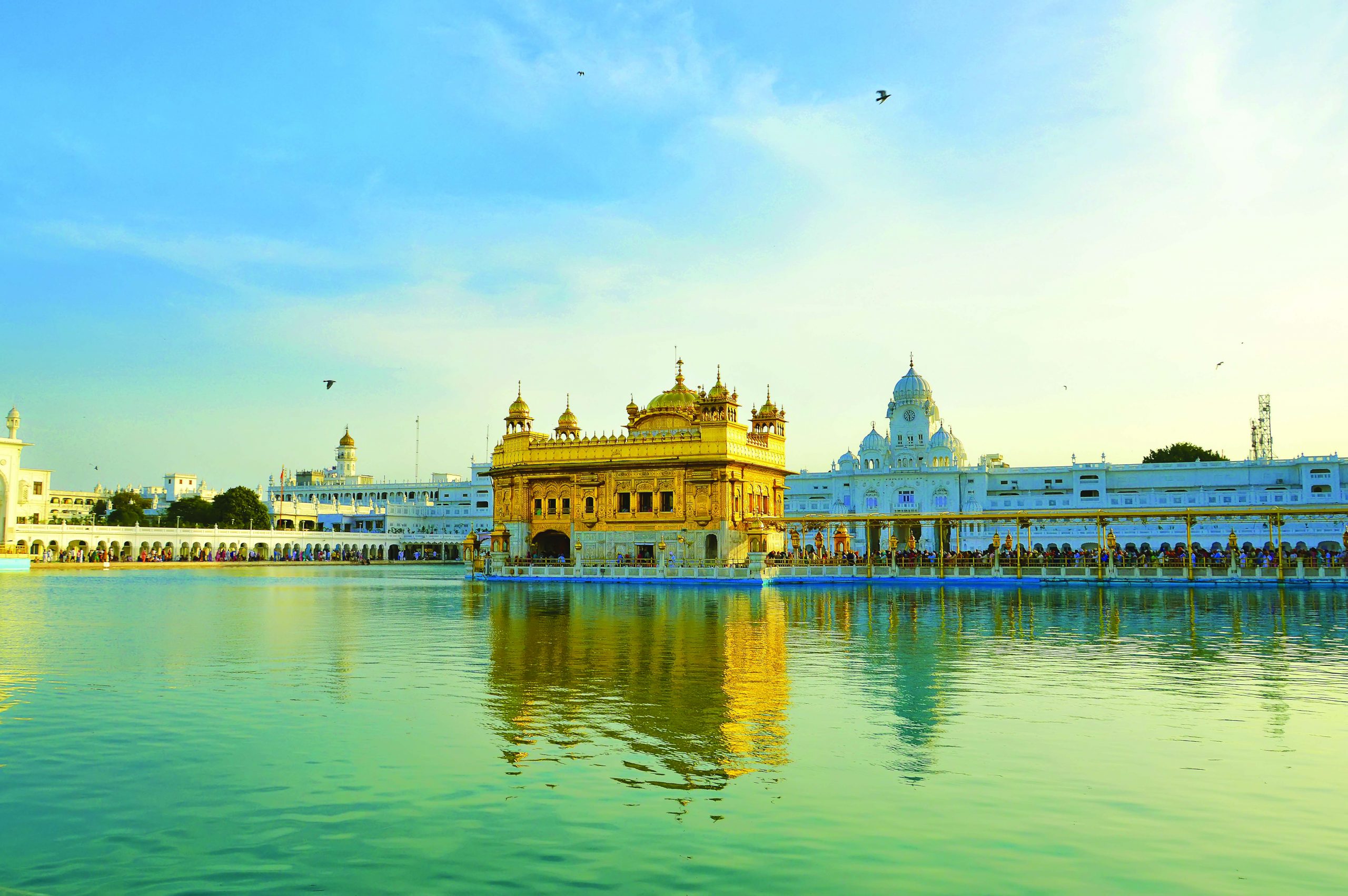
Amritsar’s most striking landmark is Gurudwara Harmandir Sahib, popularly known as the Golden Temple — sacrosanct shrine of adherents of the Sikh faith. This gleaming architectural splendour was begun in 1579 by Guru Ramdas — the fourth of the Sikh gurus — and completed a decade later by the sixth guru Arjun Dev. The sacred tank was first excavated and a temple was raised later to enshrine a copy of the Guru Granth Sahib, the sacred book of Sikhs. The temple’s golden dome, coated with copper and pure gold leaf and its sky-piercing turrets, have earned it its
famous descriptive.
The sacred tank is surrounded by a marble boundary, a circumambulatory path for the devout. Through a splendorous gateway — the Darshni Deorhi — at the edge of the pool, pilgrims move with absolute devotion across a marble causeway towards the holy sanctorum. Though crowded on all days, the temple exudes an extraordinary calm and a soul-soothing ambience. The Sikh Museum contains a gallery of paintings depicting the history of the Sikhs and their culture.
No visit to Amritsar is complete without mandatory homage at Jallianwala Bagh, the venue of the infamous massacre of over 2,000 people including women and children on April 13, 1919, by British soldiers commanded by General Dyer. Jallianwala’s bullet-scarred walls enclose a memorial
with an eternal flame, dedicated to the martyrs. Every Baisakhi day (April 13), the nation pays homage to Dyer’s victims.
Accommodation. Most pilgrims reside in the free rooms of the Golden Temple complex. The city also offers more contemporary residential options for business and leisure travellers. Top-end: Hamira Luxury Home Stay (Rs.14,850 per night), Hyatt Regency Amritsar (Rs.3,750), Taj Swarna
(Rs.4,900), Radisson Blu Amritsar (Rs.3156). Mid-range: Fairfield by Marriott (Rs.2,184), Regenta Central by Royal Orchids Hotel (Rs.2,212), Ramada Amritsar (Rs.2,398). Budget: Hotel Regal (Rs.1,132), Oyo Townhouse (Rs.1,824), Blood Boutique (Rs.1,875).
Excursions. The most popular excursion ex Amritsar is to Wagah (35 km), the only open road to the border between India and Pakistan. A colourful evening parade and impressive gate-opening ceremony enacted by Indian and Pakistani security forces evokes awe and nostalgia among
visitors. From Amritsar we headed back to the foothills. An overnight train journey away is Haridwar, the gateway to heaven for spiritual Hindus and base camp for all pilgrim centres in the hill state of Uttarakhand (pop. 11 million).
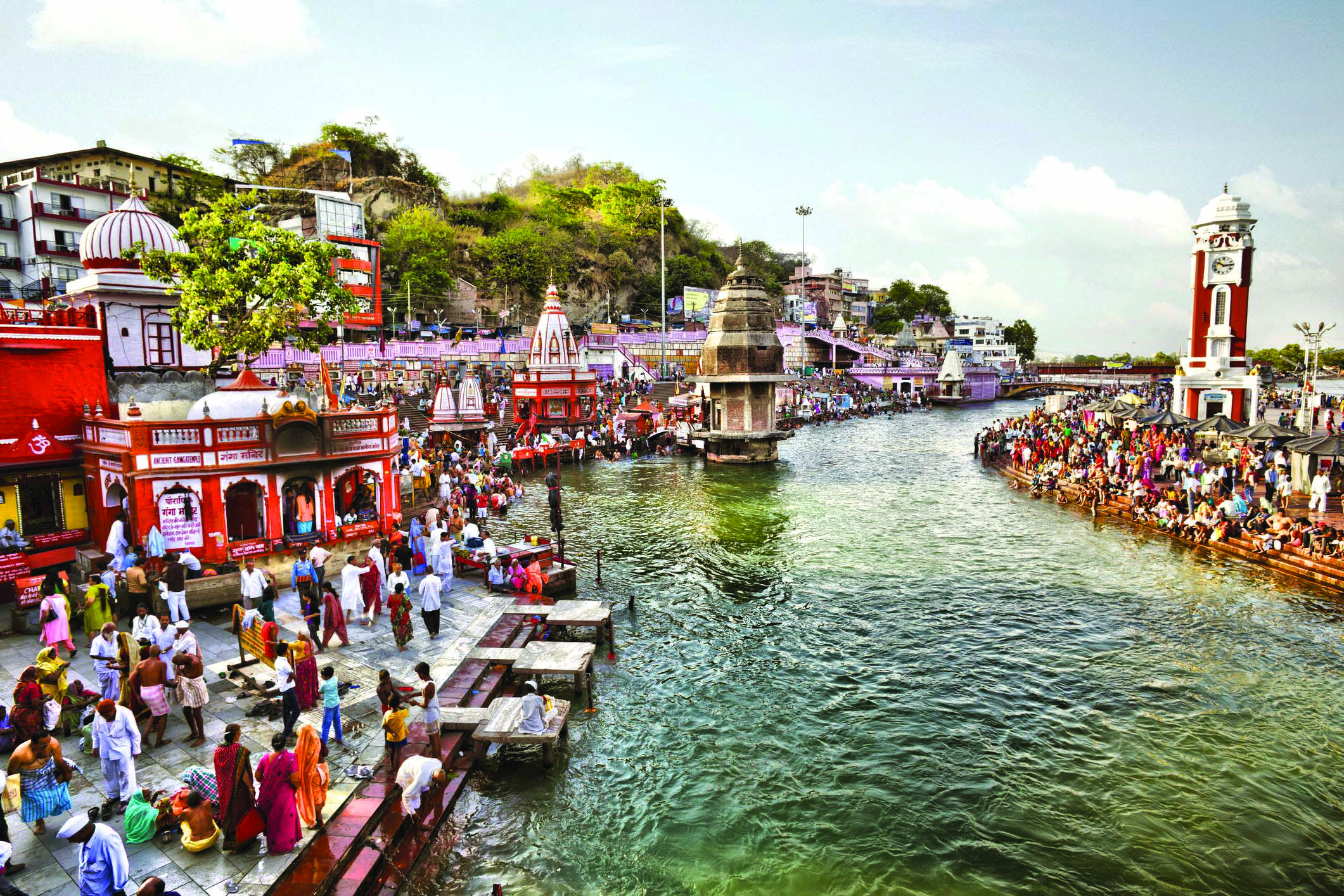
HARIDWAR
Propitiously sited at the point where the mighty Ganges emerges from the Himalayas, hurling its swirling waters into the parched fields of the plains, Haridwar (pop. 230,000) is thronged by pilgrims through the year, who take ceremonial dips in the river’s rather murky waters. The most important venues of the temple town are the hill-top temples dedicated to Manasa Devi and Chandi Devi and the Hari-Ki-Pauri aka footstep of God.
Hari-ki-Pauri is believed to be the precise spot where the Ganges leaves the mountains and enters the plains. The footprint of Lord Vishnu carved on a stone here is a sacred point where devotees hold on to chains to prevent themselves from being swept away while entering the river. Every evening the Ganga aarti or river worship is performed at this spot — a sight sublime as thousands of devout pilgrims set afloat shimmering diyas (earthern lamps) and flower offerings. Hari-ki-Pauri is also the venue of the mighty Kumbh Mela held every 12 years, with a controversial one completed in April.
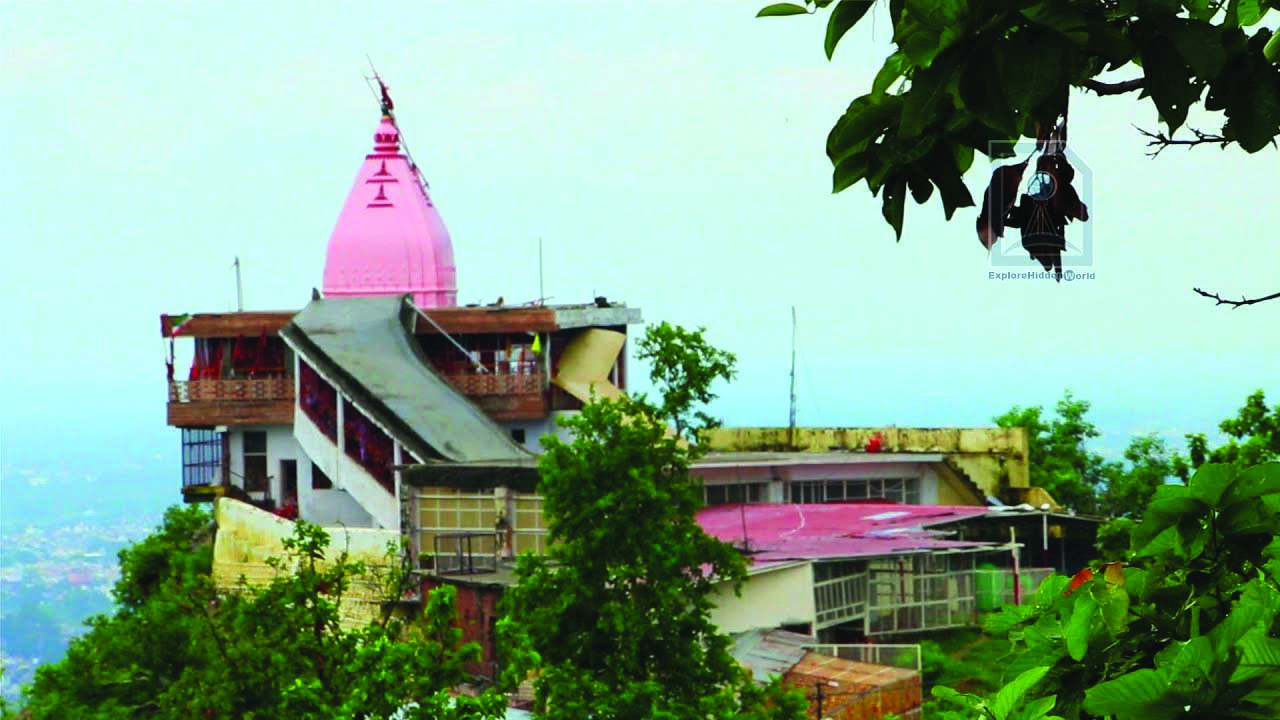
The Manasa Devi temple dedicated to Lord Shiva’s consort in her shakti avatar, located on a hill is accessed in a cable car, affording sweeping views of the Ganga and Himalayan foothills. The Chandi Devi temple provides a similar experience but with a longer (35 minute) cable car
ride. Other notable temples in Haridwar are the Pareshwar Mahadev temple famous for its mercury lingam; the Daksha Mahadev temple situated on a spot believed to be the precise location where Lord Shiva’s first wife Sati immolated herself.
Accommodation. Accommodation options in Haridwar vary from ashrams, dharamshalas, and guesthouses to international hotels, all of which raise their tariffs during season (May-July), after which room rates drop by 30-50 percent. Top-end: Amrit Bhavan Homestay (Rs.12,126 per night),
Amatra by Ganges (Rs.6,016), The Haveli Hari Ganga by Leisure Hotels (Rs.7,032). Mid-range: S D Palace (Rs.3,035), Wadhawa Homestay (Rs.2,350), Patnimal Riverside Paradise (Rs.3,807). Budget: Lakshya’s Hotel (Rs.1684), Hotel Shivaye the Boutique Hotel (Rs.1,880), Hotel Vinayak
(Rs.1,384).
Excursions. Rajaji National Park (85 km), a wildlife reserve spanning 820 sq km is best known for its 445-strong population of wild elephants. Tigers, leopards, chital (spotted deer), sloth bears and sambars also inhabit the park. Chilla (13 km) north-east of Haridwar is the starting point for elephant rides in the morning and at dusk. For Rs.350 one can ride an elephant through the park and be almost sure to sight some wildlife.
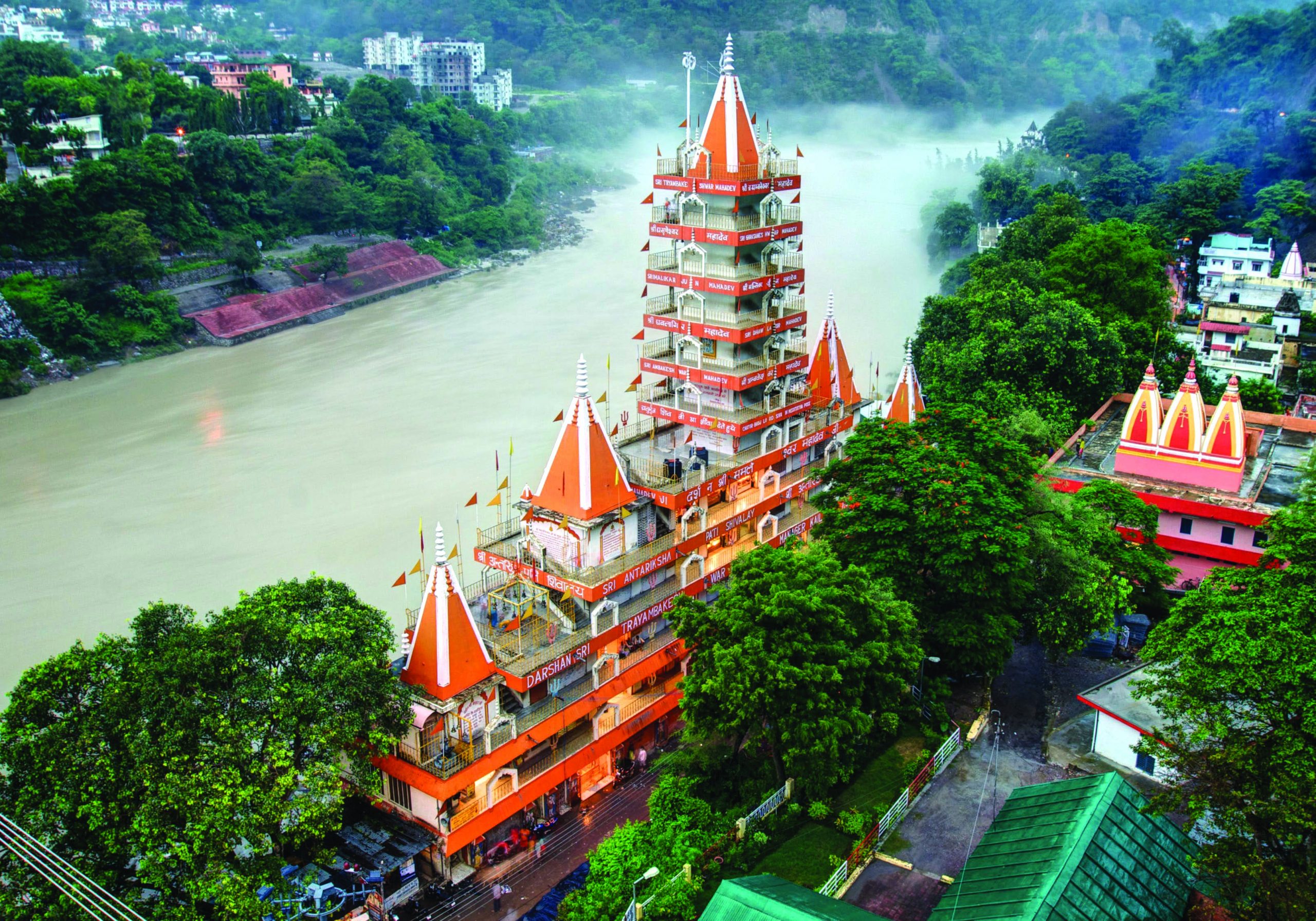
RISHIKESH
Our next stop was at Rishikesh (pop. 252,533), a mere 35 km from Haridwar. Famously known as the ‘yoga capital of the world’, Rishikesh offers a combination of misty mountain slopes, the frothing Ganga, mystic sadhus, internationally acclaimed yoga masters and numerous ashrams.
A visit to Rishikesh would be incomplete without a walk across the two famous suspension bridges, Ram and Lakshman Jhula. The latter built in 1929 provides access to the 13-storey temples of Swarg Nivas and Sri Trayambakeshwar. These orange turreted structures host dozens of small shrines on each level dedicated to various deities of the Hindu pantheon. A pleasant two km walk along the east bank from Lakshman Jhula takes you to Swarg Ashram, a yoga complex with numerous schools offering short and long term courses in the myriad styles and schools
of yoga.
Accommodation. Free residential accommodation is provided by numerous ashrams and dharam-shalas. But these are mere halls of residence without any other facilities. For those who prefer a more comfortable residential accommodation, other options are available. Among the better known hotels are: Aloha on Ganges by Leisure Hotels (Rs.7.032 per night), Summit by the Ganges Beach Resort and Spa (Rs.2,095), Ganga Kinare, A Riverside Boutique Hotel (Rs.6,930), Pahadi Homestay (Rs.3,600).
Excursions. Innumerable treks, trails and walks in the grassy foothills of the Himalayas are within easy reach. Neelkantha Mahadev temple (17 km) is a picturesque four-hour walk from the town. Uttarkashi (155 km) is an important pilgrim town on the way to the Char Dhams. The renowned Nehru Institute of Mountaineering where Bachhendri Pal — the first Indian woman to climb Mount Everest — was trained, is situated here.
Also Read: Punjabi diaspora transforms cheerful land of five rivers























